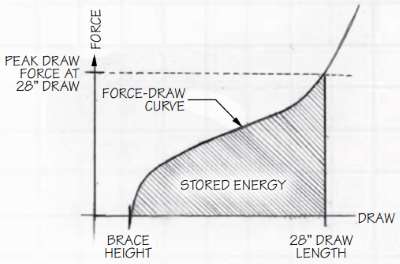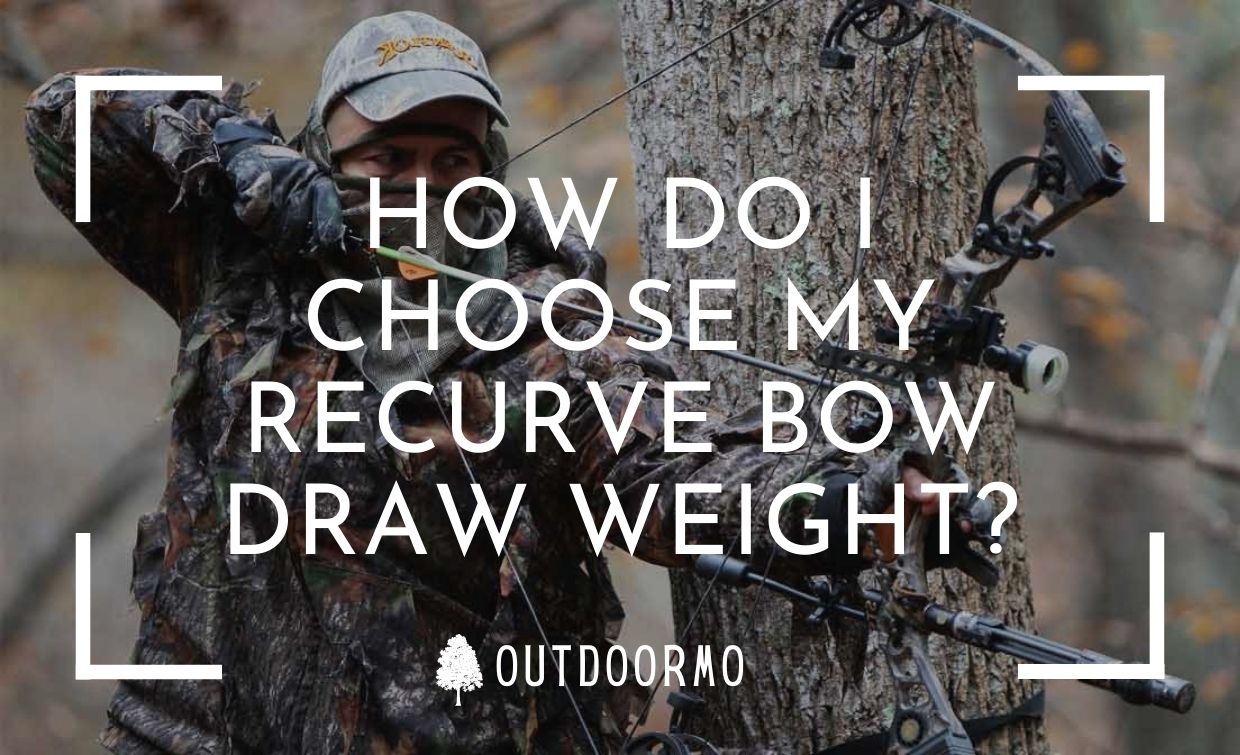While many compound bows feature adjustable draw weights, recurve bows do not. Since they are not adjustable, it is important that you fix them the first time. If the weight of your bow is too heavy, you will eventually develop bad form and open up the possibility of injury. So, in this small article, we will learn about recurve bow draw weight.
So that brings us to the following questions:
What is the recurve bow draw weight?
The Recurve bow draw weight is the force you must exert (pull back) on the string to pull it across the range of motion. This is usually calculated in pounds and is often denoted by the “#” symbol. Pulling the weight is another way to see how easy or difficult it will be for you to return the rope to its full length.
How is the draw weight adjusted in a recurve bow?
The traction weight of the bow is dictated by the construction and stiffness of the limbs and cannot be adjusted. The only exception to this rule is when you buy a takedown recurve bow.
With a descending bow, you can often increase the strength of the bow after increasing the ability to pull heavier bow weights by purchasing a new set of ends for the repetitive bow.
Related Articles:
- The Best 177 Pellets for Hunting, Accuracy, and Small Things
- Best Climbing Tree Stand For Big Guys
- Best .22 Pellets for Hunting with Accuracy
- Best .22 Air Rifle for Hunting Reviews {Budget Friendly} (2021)
What difference does the weight of the draw make?

The different tie weights are not only more or less difficult to shoot but are also suitable for different tasks with your bow. The more you have to pull the string, the more kinetic energy will be released when you shoot the arrow. With this in mind, you need to think carefully about your archery goals before choosing a hammer.
Let’s see what you can do with different benefits:
What can be done with a 25 # or 30 # recurve bow?
Young men and women of short stature sometimes have problems with a tie over 30#. Fortunately, these lighter reps are still more than enough for goal-oriented recreational practices. With time and discipline in target and shape development, even a light bow can be used to hit a target of 60 or even 70 yards.
This of course depends on your skills, as the tool itself will not do the job for you.
The bottom line, however, is if you just want to practice focused, a 25 # or 30 # recurve bow is perfect for you.
What about bows of 35 to 40 pounds?
These classics are also ideal for recreational archery, and you could shoot over 80 meters if you have the eye and concentration for it. When you upgrade to a 40 # arc, the world of bow hunting opens up to you.
For anything below, keep in mind that the arrow probably does not have the kinetic energy to pierce the flesh of your prey, especially if the shot is longer than 15 to 20 meters.
If you are planning to hunt wild turkeys or deer, a 40 # recurve bow works well for you. If you are looking to add some pizza to the list of suitable toys, reaching 45 # will have a positive effect on performance and confidence, especially when you are not on your prey.
What can I do with a draw weight of 45 # and over?
These bows can be used for almost anything, including targeted practice and hunting, except for larger species of prey such as bears or buffalo. For these larger animals, you will need a draw weight of at least 55 #.
The most important thing to remember about repetitions is that you should try to keep up with the capabilities of the tool and not the other way around. A 55 pound bow is definitely not a starting bow, but a bow to work with.
Shouldn’t I have the strongest bow I can get?
Not exactly, no. At least not in the beginning. The strongest arches are designed to be built with practice over time. These bows should generally not be started by beginners.
If you have never done a bowing exercise before, you probably do not know what kind of traction weight your muscles can handle. While they adapt quickly and what may seem difficult one day becomes much easier after shooting a few hundred arrows, being overly traction can lead to poor form, poor technique and even injury. .
In this context, starting with a very attractive weight is also not the best idea, as you can not properly adjust your body and train at heavier weights.
The smaller your frame, the less you can work with lottery weight and the same goes for bigger ones. So look at this list of pounds:
| Archer’s Weight | Suggested Draw Weight |
|---|---|
| Small Children (70-100 lbs.) | 10-15 lbs |
| Larger Children (100-130 lbs.) | 15-25 lbs |
| Small-Frame Female (100-130 lbs.) | 25-35 lbs |
| Medium-Frame Female (130-160 lbs) | 25-35 lbs |
| Small-Frame Male (120-150 lbs) | 30-45 lbs |
| Medium-Frame Male (150-180 lbs) | 40-55 lbs |
| Large-Frame Females (160+ lbs) | 30-45 lbs |
| Large Frame Men (180+ lbs) | 45-60 lbs |
How can I increase my Recurve Bow draw weight?
The first and foremost way to increase the amount of bow you can handle is to just shoot at it and throw arrows. Your muscles will adjust quickly and after a few hundred strokes you will find that it gets easier over time. Of course, we can’t spend all day archery. Here are some exercises to help you build muscle strength outside of archery.
- Push-ups
- Pull-ups
- Bench press
- Curved lines
- Lat machine work
- Curls
- Lateral dumbbell raises
- Standing rows
You can also use tools like bow dry fire to build muscle strength and exercise fitness. However, purchasing products is not essential. Specials to improve the back and shoulder muscles while archery.
What draw weight should I choose?
- If you want to use the recurve bow to hunt for the most popular games like deer, elk, turkey, you need at least 40 lbs. Having Draw weight more than this(preferably 45)? that’s great!
- If you want to hunt for the largest game similar to grizzly bear, ox, cape buffalo, you’ll need 55 lbs. or more. A good amount of experience as well.
- If you want to use the recurve bow only for target shooting, any draw weight will do – even as low as 25 lbs.
- If you want a recurve for both hunting and target practice, go for at least 40 lbs or more.
Summary
Recurve bow draw weight doesn’t have to be a mystery, and figuring out what force is optimal for you to aim in a recurve bow is actually pretty easy. Think about your height and what you want to do with your archery and you can easily find a grinder that suits you.
The fact that your muscles adapt to the force it takes to pull the string means you can start with a cheaper, lighter weight, heavy bow and a hen will work up to the weight you need to get a bigger one to hunt. Have Fun this season.
You may also like:

